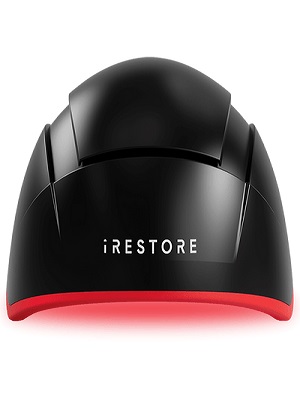Hair loss is a concern that affects millions of people around the world, regardless of age or gender. Whether it’s due to genetics, stress, medical conditions, or environmental factors, losing hair can deeply impact self-confidence. As a result, many people turn to treatments that promise to restore hair—and one of the most talked-about solutions in recent years is the iRestore Laser Hair Growth System.
But what exactly is iRestore? How does it work? And most importantly, does it actually deliver results? Let’s break it down.
What Is iRestore?
iRestore is a non-invasive, FDA-cleared laser hair growth device designed to combat thinning hair and support regrowth using low-level laser therapy (LLLT). It’s essentially a helmet-like device that users wear on their heads several times a week, with the goal of stimulating hair follicles and encouraging regrowth over time.

The system is primarily marketed to individuals dealing with:
- Androgenetic alopecia (pattern baldness)
- Thinning hair due to aging or hormonal changes
- Hair loss after pregnancy or illness
- General scalp health improvement
How Does iRestore Work?
iRestore uses low-level lasers and LEDs to deliver light energy directly to the scalp. This light penetrates the scalp tissue and is believed to:
- Improve cell metabolism
- Increase blood flow to hair follicles
- Reactivate dormant follicles that have stopped producing hair
The underlying science, known as photobiomodulation, is the same technology used in other medical applications to promote healing and tissue regeneration.
Most iRestore models recommend using the device three to four times per week, for 25-minute sessions. It’s a hands-free system, so you can wear it while watching TV, reading, or working from home.
Is iRestore Effective?
The effectiveness of iRestore varies from person to person, depending on factors like the cause of hair loss, how early it’s caught, and how consistently the device is used. That said, clinical studies and user testimonials do offer some promising data.
✅ Clinical Evidence:
- iRestore conducted a 16-week double-blind study with 100 participants.
- Results showed that 100% of active users saw visible hair improvement.
- On average, participants grew 43.2% more hair compared to the control group.
Of course, while these results are encouraging, it’s important to remember that hair growth is a slow process. Users typically start seeing results after 3 to 6 months of consistent use.
Pros and Cons of iRestore
Pros:
- Non-invasive and drug-free
- FDA-cleared for safety and effectiveness
- Easy to use at home
- Backed by a money-back guarantee (usually 6–12 months)
- Can be combined with other treatments (like minoxidil or biotin)
Cons:
- Pricey upfront cost (ranges from $695 to over $1,200)
- Requires commitment (multiple sessions per week for months)
- May not be effective for severe or advanced hair loss
- Results vary depending on individual factors
Who Should Consider iRestore?
iRestore is best suited for individuals experiencing early to moderate hair loss. If you’re noticing thinning around the crown or temples but still have active follicles, you’re likely a good candidate. It’s also a strong option for those looking to avoid medications with potential side effects or invasive surgical options like hair transplants.
Final Thoughts
iRestore represents a blend of modern technology and proven science to tackle a problem as old as time: hair loss. While it’s not a miracle cure, for many people it’s a valuable part of a multi-pronged approach to hair restoration. Like any treatment, consistency and patience are key.
If you’re considering investing in iRestore, do your research, consult with a dermatologist, and set realistic expectations. With dedication, it could be the boost your hair (and confidence) needs.
Have You Tried iRestore?
If you’ve used iRestore or are thinking about it, let us know your experience or questions in the comments. We’d love to hear your thoughts!







